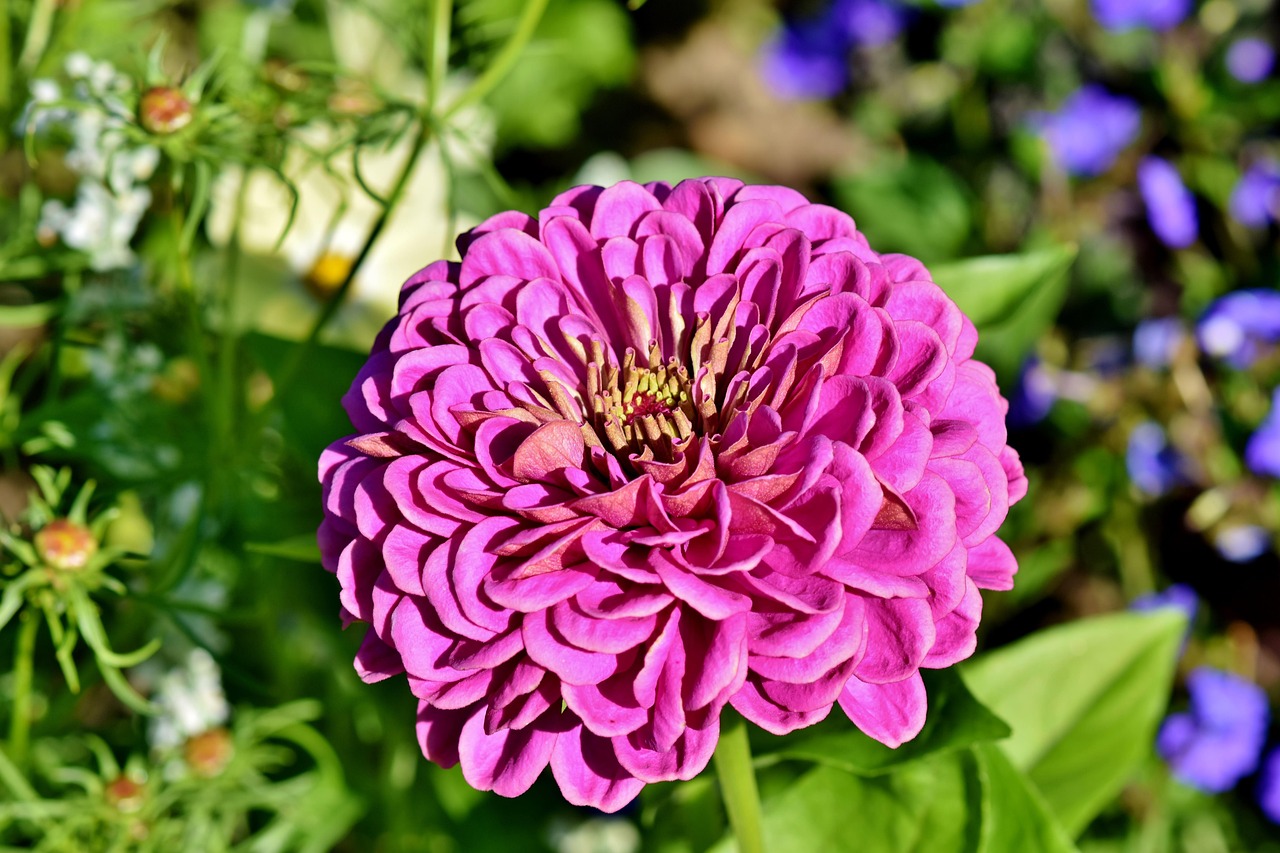
Zinnias are vibrant and colorful flowers that can bring life and beauty to any garden or outdoor space. While they are commonly grown in traditional garden beds, growing zinnias in containers opens up a world of possibilities for those with limited space or a desire for more flexibility in their gardening. In this article, we will explore the step-by-step process of how to grow zinnias in containers, allowing you to create stunning displays that will be the envy of your neighborhood.
Table of Contents
Choosing the Right Container
The foundation for zinnia success starts with a suitable container. Here’s what to consider:
- Size: Select a container that’s at least 12 inches deep and wide for dwarf varieties, and 18 inches or more for taller ones. Ensure it has drainage holes to prevent waterlogging, which can damage the roots.
- Material: Plastic, terracotta, and ceramic pots are all viable options. Plastic tends to be lighter and more affordable, while terracotta and ceramic offer better breathability and a classic aesthetic. Opt for lighter-colored containers in hot climates to prevent overheating the soil.
Preparing the Container
Before planting your zinnias, it’s essential to prepare the container properly to create an optimal growing environment.
Clean and Sterilize
- Clean the container thoroughly to remove any dirt or debris.
- Sterilize the container with a diluted bleach solution to eliminate any potential pathogens.
Add Drainage Material
- Place a layer of small stones or broken pottery shards at the bottom of the container.
- This layer will help improve drainage and prevent the soil from compacting.
Quality Potting Mix
- Fill the container with a well-draining potting mix.
- Choose a mix specifically formulated for containers, which will provide the right balance of moisture retention and aeration.
Planting Your Zinnia Seeds
With the groundwork laid, it’s time to plant your zinnia seeds:
- Timing: Sow seeds directly outdoors after the danger of frost has passed and the soil temperature reaches at least 60°F (15°C). Alternatively, you can start seeds indoors 4-6 weeks before the last frost date.
- Planting Depth: Sow seeds about ¼ inch deep and space them 2-3 inches apart. You can later thin out seedlings to ensure each plant has enough space to grow.
- Watering: Gently water the seeds and keep the soil consistently moist, but not soggy, until germination occurs.
Nurturing Your Zinnia Babies
As your zinnia seedlings flourish, here’s how to provide them with the care they need:
- Sunlight: Zinnias are sun worshippers. Provide them with at least 6-8 hours of direct sunlight daily for optimal growth and flowering.
- Watering: Water regularly, especially during hot and dry periods. Aim to keep the soil evenly moist but avoid overwatering. A good rule of thumb is to water when the top inch of soil feels dry to the touch.
- Feeding: Once your zinnias have established a few sets of true leaves, you can begin feeding them with a balanced liquid fertilizer every 2-3 weeks. Dilute the fertilizer according to the product instructions.
- Deadheading: Regularly remove spent blooms by pinching them off just below the flower head. This encourages continuous blooming and keeps your plants looking their best.
Troubleshooting Common Issues
While zinnias are generally low-maintenance, here are some occasional challenges you might encounter:
- Leggy or weak plants: This could indicate insufficient sunlight. Relocate your container to a sunnier spot.
- Yellowing leaves: This could be a sign of overwatering, nutrient deficiency, or pest damage. Check the soil moisture and adjust watering practices accordingly. If necessary, fertilize with a balanced fertilizer and inspect for pests like aphids or spider mites.
- Powdery mildew: This fungal disease appears as white powdery spots on leaves. Improve air circulation around your plants and treat them with a fungicide if necessary.
Frequently Asked Questions
Can zinnias be grown from seeds in containers?
Yes, zinnias can be grown from seeds in containers. Sow the zinnia seeds directly into the container according to the instructions on the seed packet, ensuring proper spacing and planting depth. Alternatively, you can also transplant zinnia seedlings into containers.
How much sunlight do zinnias in containers need?
Zinnias thrive in full sun, so it is recommended to place the containers in a location that receives at least 6-8 hours of direct sunlight each day. Ensure that the zinnias are protected from strong winds, as they can damage the delicate blooms.
How long do zinnias in containers bloom?
With proper care and maintenance, zinnias in containers can bloom for several months, providing stunning displays of vibrant colors throughout the growing season. Regular deadheading and removal of spent flowers can help prolong the blooming period.
Can I use the zinnia blooms from containers in floral arrangements?
Absolutely! Zinnia blooms from containers can be cut and used in floral arrangements. Harvest the blooms when they are fully open and at their peak. Cut the stems at a 45-degree angle and place them in a vase with clean water for a beautiful and colorful addition to your floral displays.
